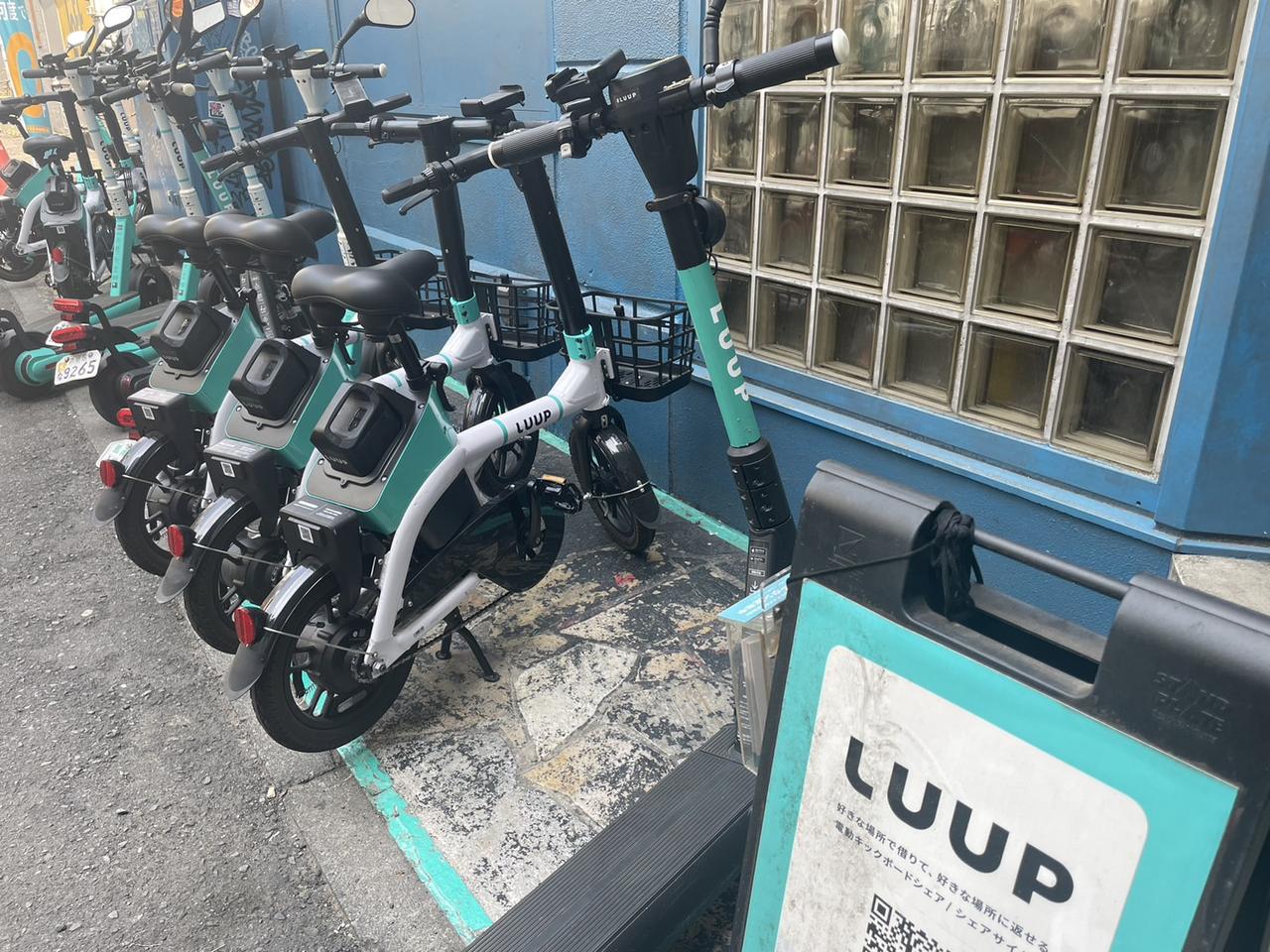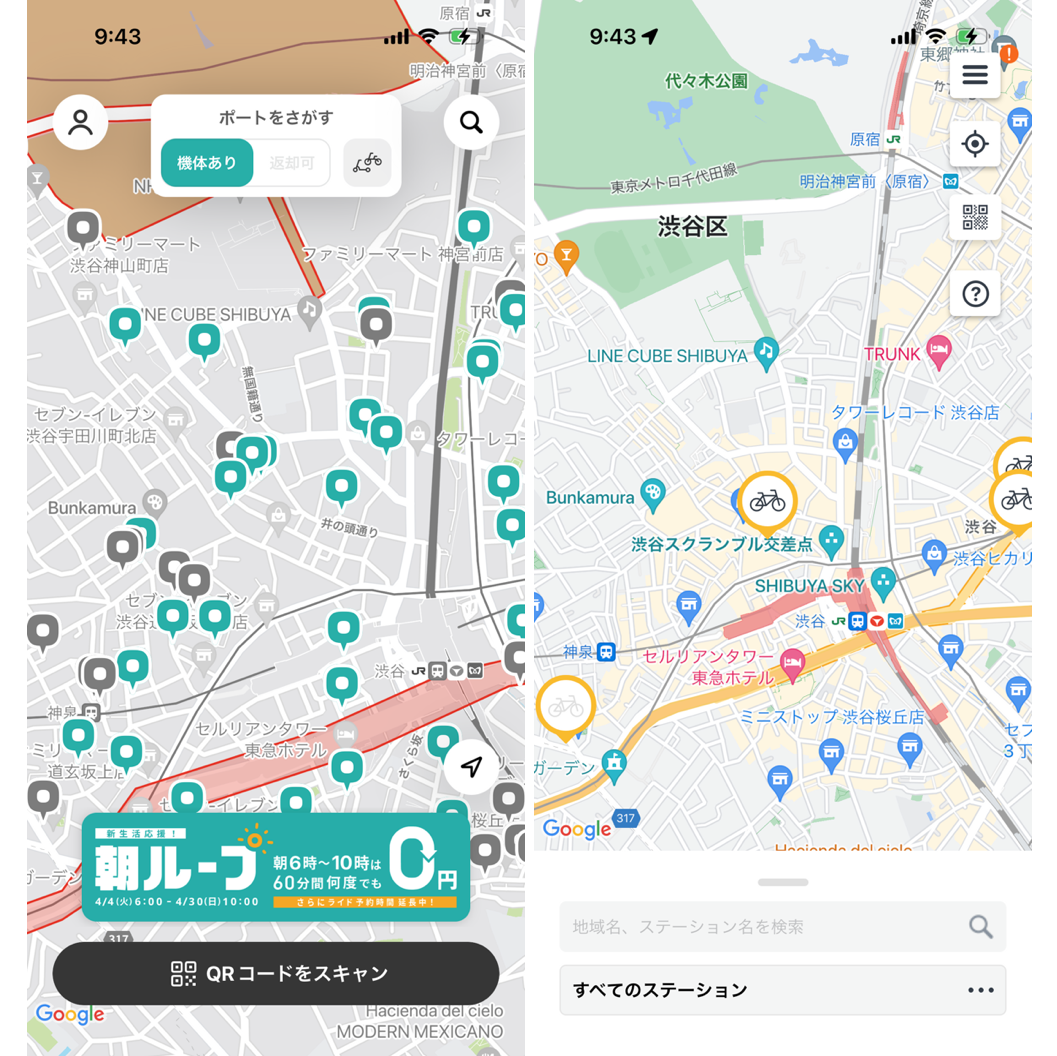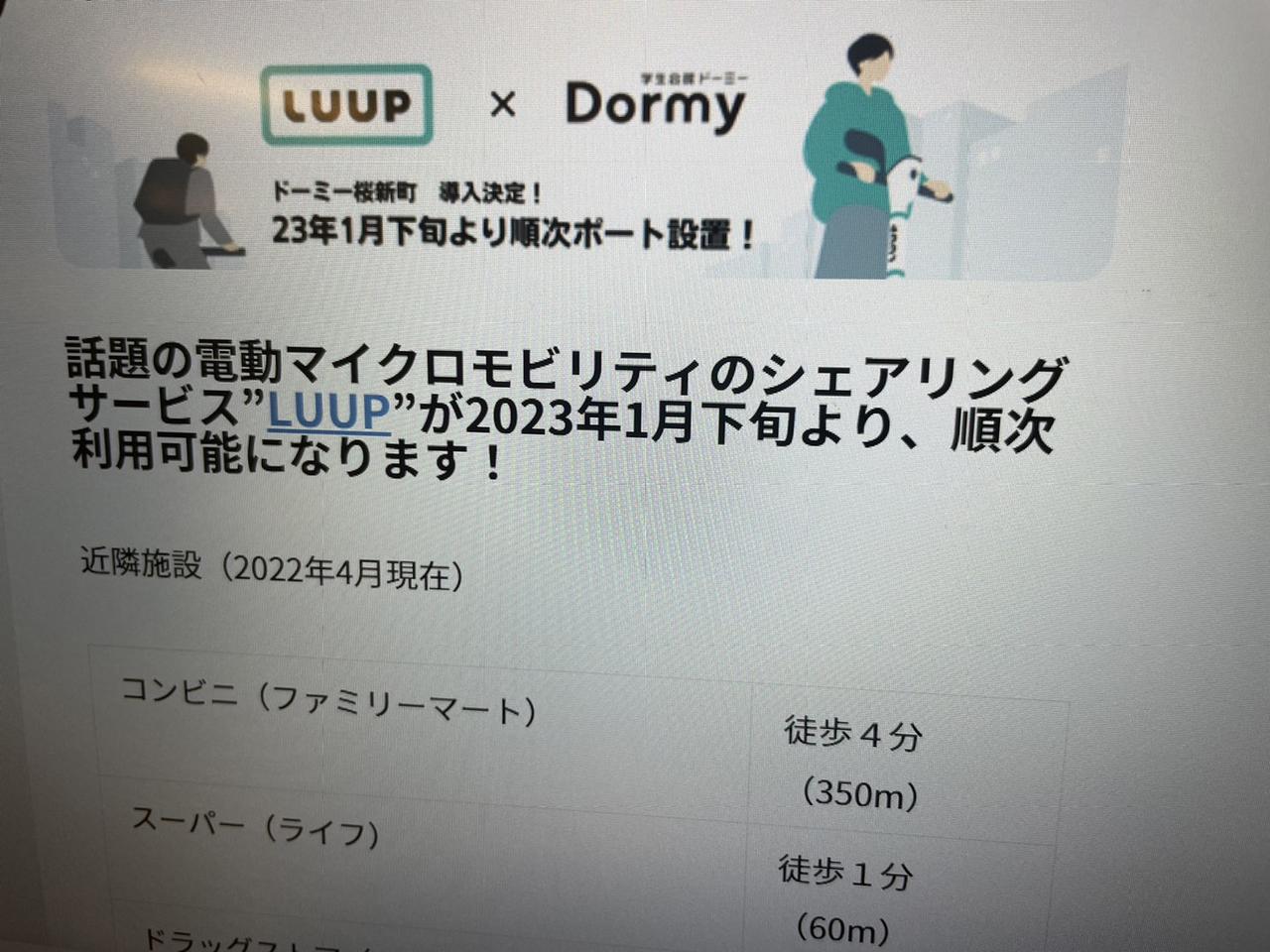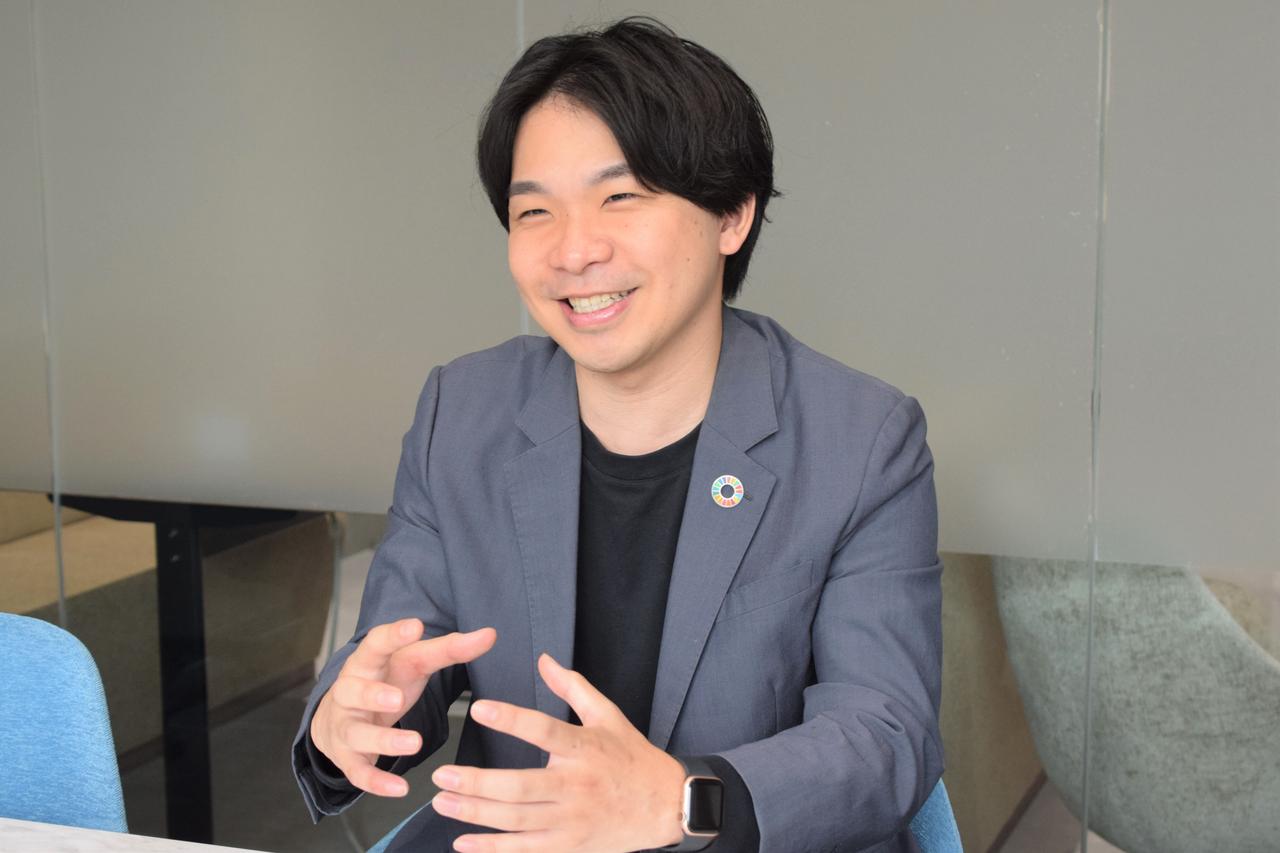Daiki Okai, CEO of Loop.
“The number one thing is that users have started using it properly, and sales are increasing with repeat purchases.If it continues to grow at this rate, it will likely become profitableI think you have decided that
Luup, which handles electric scooter and bicycle sharing services, combined third-party allotment capital increase with bank borrowing and leasing4.5 billion yen in totalProcured of. Existing investors Spiral Capital, ANRI, SMBC Venture Capital, etc., as well as new investors such as 31ventures, Mitsui Fudosan’s CVC, have joined. This brings Luup’s total funding to about 9.1 billion yen.
Daiki Okai, CEO of Loop, explained at the beginning why he was able to raise so much money even in an environment that is said to be a recession for startups.
In July 2023, a new vehicle category for electric kickboards will appear due to the revision of the Road Traffic Law. Along with this, if it is an aircraft that meets the new safety standards, even if you do not have a driver’s license, you will be able to drive if you are over 16 years old.
With a new growth phase just around the corner, we asked CEO Okai about the growth strategy envisioned by Loop.
“I can’t see the ceiling” for 2 years since the service started
Daiki Okai, CEO of Loop.
Loop started electric scooter sharing service in April 2021.
CEO Okai talks about the progress of service expansion over the past two years, saying, “There is still no ceiling in sight.”
“Although the number of ports has increased, there are still many areas in Tokyo where there are few. Even in Shibuya, where we are, the repeat rate of users will increase if we increase the number of new stores.I think the supply has not caught up yet.”
Currently, the number of dedicated parking lots called ports is mainly in Tokyo, Osaka, and Kyoto.about 3000.Number of app downloadsOne millionexceed. Many usersgo to work”or”going to school’ uses a loop.
“Even in winter, the number of people who use it for commuting to work or school has not decreased.Has a universal and persistent way of stabbingWe are now able to make judgments based on numerical values.” (CEO Okai)
Users often start with kickboards, but bicycles are popular among repeat users.
“The percentage of repeat users who use bicycles is high in the sense that the traffic rules are easy to understand, the speed is fast, and it is a vehicle that they are more familiar with than electric scooters. If the maximum speed is 20 km/h, the average speed of both will be about the same.There is a high possibility that usage will change after about a year(CEO Okai)

port of the loop. Although the image of electric scooters is strong, we are also developing a compact bicycle sharing service.
Loop has also raised 2 billion yen in August 2021.
However, at that stage, the revision of the Road Traffic Law related to electric scooters had not yet been decided, and investors were skeptical about whether the service would really take root in the world, said CEO Okai. talk.
“This time, we were highly evaluated for clearing the dangerous areas in the previous procurement. It was also important that we were able to judge that if we continue to grow at this rate, we should be able to turn a profit.” (CEO Okai)
Recently, it is said that the difficulty of raising funds for startups is increasing, but in this time’s funding of Luup, “We didn’t have a hard time, and they decided to raise the valuation.” Luup CFO).
Advertisements
It is a close-range dense type and specializes in short-distance movement.Efficient operation

A comparison of the number of ports near Shibuya. Loop on the left and Hello Cycling on the right. The difference in density is clear.
The decisive difference between Loop and other sharing service operators is its “port density.”
For example, HELLO CYCLING, which is operated by OpenStreet, a major bicycle sharing company,”whole city”1,958 stations have been installed inwhereas the loop”Within 23 wards of Tokyo”(Except for some districts), approximately the same number of 1950 ports are installed.
Perhaps because of this difference, the loop usage time isIt takes about 7 minutes on average and travels 1-2 kmIt is said that there are many cases where it is used forAccording to the Bicycle Industry Promotion Association’s “Share Cycle Utilization Survey Report”, the most common usage time for share cycles is15 minutes or more and less than 30 minutesSo, it is clear that the way loops are used is specialized for short distances.
“If you travel 1-2 km in 7 minutes, you only walk 1-2 minutes to the loop port.Without one port in a radius of about 80 meters, it cannot withstand short-distance movement. I believe that our company is the only company in Japan that has products optimized for short distances.” (CEO Okai)
Installing ports at a high density actually leads to enhanced cost competitiveness.
The loop decides which port to return on the app when it starts the ride. This is to avoid a flood of vehicles due to a concentration of returns at a specific port. If the density of ports is low, there is a high possibility that there will be no return slot at the destination you want to go, making it difficult to choose a means of transportation.
“Vehicles will inevitably stagnate, but this can be solved by adjusting the number of neighboring ports. It is easy to understand where the ports are most suitable if they are arranged in high density. It is easy to approach the ideal image. (CEO Okai)
Battery replacement when the charge runs out can also be made more efficient by deploying ports at high density.
“The higher the density, the lower the unit cost. Replacing a battery in a vehicle is a quick job in itself, like paying labor to move between ports. The closer it is, the more efficient it is.”
Securing profitability has been an issue for the shared mobility business. According to a survey by the Ministry of Land, Infrastructure, Transport and Tourism, 60% of bicycle-sharing businesses are negative. Some operators account for 30% to 40% of running costs for relocating vehicles.
Under these circumstances, the loop has reduced management costs and increased convenience with a close-range dense port model.
“It is not yet possible to say whether the company as a whole, including head office costs, is sufficiently profitable, but the business itself is practically viable.” (CEO Okai)
It says.
To be installed in 10,000 locations nationwide by 2025

Loop’s electric scooter will be gradually replaced with a type that conforms to the new vehicle classification as the law is revised.
The 4.5 billion yen raised this time will be used to respond to the upcoming revision of the Road Traffic Act in July and to scale the business.
First of all, we will update the app and aircraft according to the revision of the law. If the electric scooter meets the new safety standards due to the revision of the law, “Specified small motorized bicycleIn this category, even if you do not have a driver’s license, you can drive if you are 16 years old or older.
On the software side, we will revise the traffic safety test to be carried out before the start of use, and create an age authentication mechanism so that people under the age of 16 do not use it. Since it is compulsory to install a “maximum speed indicator light” on the aircraft, the vehicles will be replaced sequentially from July.
Another option is to expand the service nationwide. By 2025, the number of ports will increase from the current approximately 3,00010,000 locationsincrease to
“The inquiry form has been around for 2-3 years.Filled with content from local governments, tourism organizations, hotels, etc., “I want you to put a loop”is. Up until now, we wanted many users to use the system in a short period of time for safety verification purposes, so most of the ports were in urban areas. (CEO Okai)
The company plans to secure human resources for maintenance through cooperation with local companies.
“This is already happening in the city center, but we have partnerships with local businesses that have employees in the city, such as newsagents, retailers, and delivery businesses. There are peak hours, so there are quite a few people who are free during that time. Their income will increase, and we are familiar with the local area, so we can reach out to them.” (CEO Okai)
Aiming to be a “developer”

A real estate site announcing the porting of the Loop.
Loop is a company that tends to have an image of “an electric scooter company.”However, what you are aiming for isClose to “developer”says CEO Okai.
For example, in property information, “there is a loop port” has come to be shown as a value, as well as the proximity to a station or convenience store.
“With the presence of a loop port, there is a possibility that properties located far from the station, which were previously excluded from the list of options, can be viewed.Mobility can bring variablesabout it”
However, what we are aiming for is not just to take root in the community as a mere means of transportation.
“Tokyu and JR started urban development with railways as the starting point. For example, JR is involved in real estate development and advertising business. I think it is necessary to make a lot of things that make you think.The existence of a loop gives the town a foil. We are aiming for such a world.” (CEO Okai)
Source: BusinessInsider
Emma Warren is a well-known author and market analyst who writes for 24 news breaker. She is an expert in her field and her articles provide readers with insightful and informative analysis on the latest market trends and developments. With a keen understanding of the economy and a talent for explaining complex issues in an easy-to-understand manner, Emma’s writing is a must-read for anyone interested in staying up-to-date on the latest market news.

